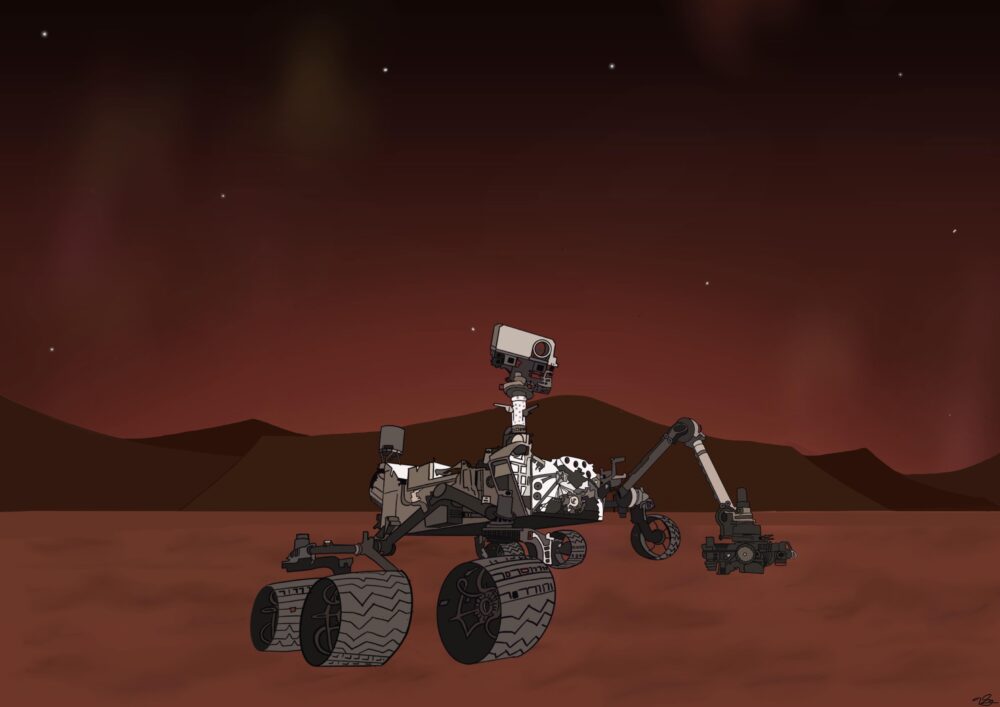
By Kyle Nguyen & Catherine Vu
The National Aeronautics and Space Administration’s (NASA) Perseverance rover safely landed at its target destination on Mars on Feb. 18 at 12:55 PST after embarking on its journey over six months ago.
The rover will attempt to seek signs of ancient life on the planet’s Jezero Crater, the site of an ancient lake and river delta. Perseverance will collect rock and soil samples from this site that will be returned to Earth for in-depth analysis in subsequent missions.
NASA is also testing a variety of new instruments that will provide the most comprehensive account of Mars’ environment thus far. Hopefully, these objectives will prepare humanity for future exploration and potential settlement of the red planet.
“Successfully landing the rover on Mars is an incredible feat of engineering,” senior Taylor Williams said.
Perseverance simply surviving its harrowing Entry, Descent and Landing (EDL) phase, also dubbed as the rover’s “seven minutes of terror,” is amazing considering the fact that half of all Mars landing missions have failed.
The rover’s EDL phase was even more difficult because its target destination did not have much flat terrain to land on. Jezero Crater is a 28 mile-wide basin filled with steep cliffs, sand dunes and boulder fields. NASA developed two new technologies to help Perseverance avoid these hazardous obstacles.
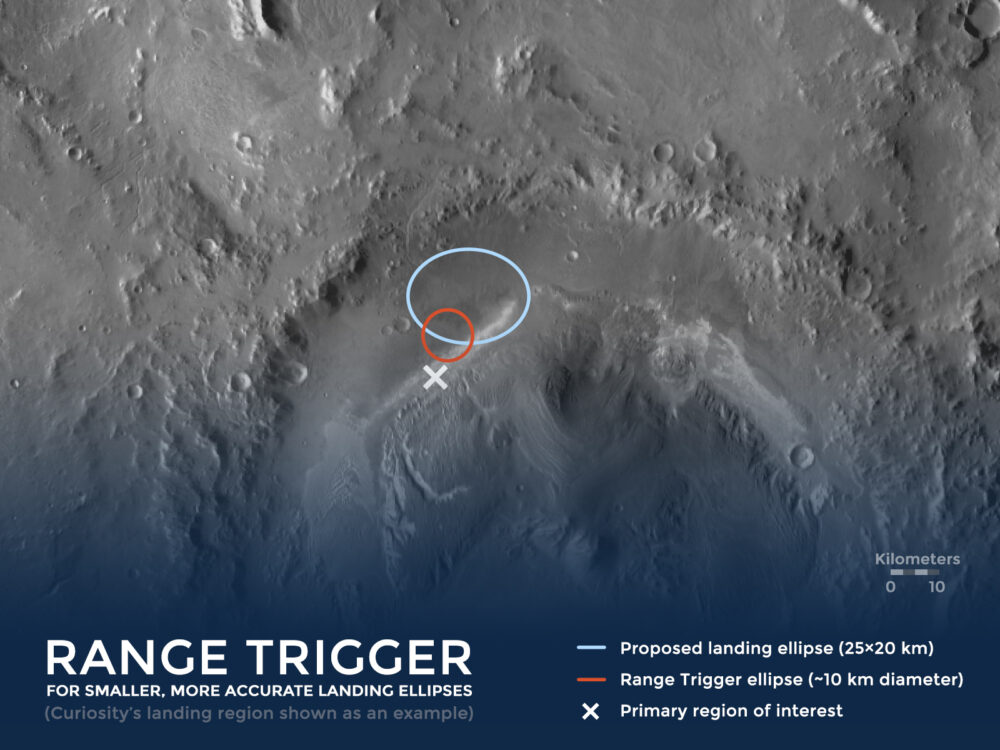
Range Trigger used precise parachute deployment timing to increase the Mars 2020 spacecraft’s landing accuracy. Whereas previous landing craft had to immediately deploy their parachutes once they reached a predetermined velocity, Range Trigger deployed Mars 2020’s parachute based on its relative position to the landing target. If entry overshot the target, the parachute would deploy earlier. If the spacecraft fell short of its target, the parachute would deploy later. Thanks to Range Trigger, Perseverance was able to land in Jezero Crater’s rocky terrain.
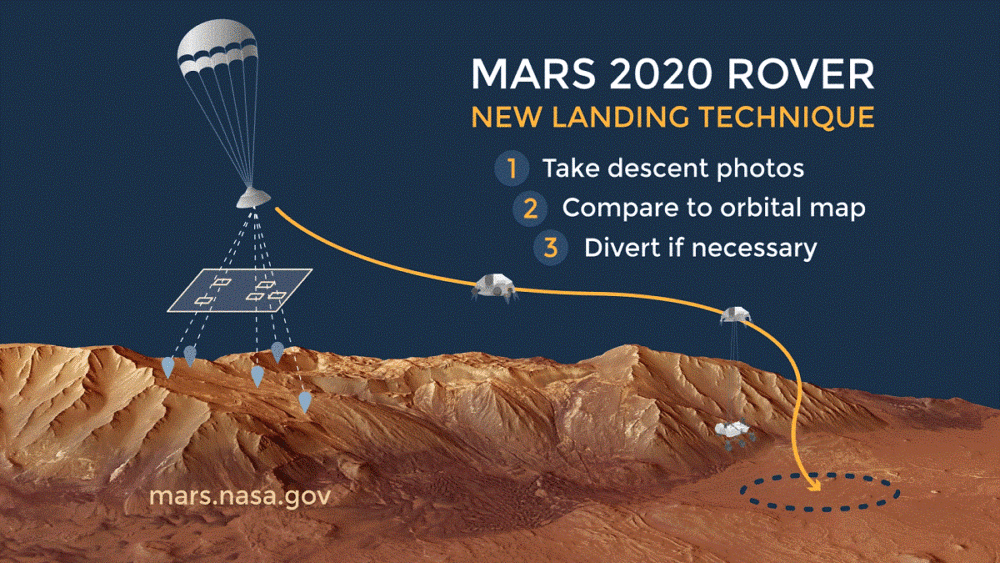
Terrain-Relative Navigation was the most important software that helped Perseverance land safely. It compared maps of Jezero Crater from Mars orbiters to images it took during descent. If there was hazardous terrain below, Terrain-Relative Navigation would divert Mars 2020 elsewhere. This technology was able to decrease the rover’s landing area from 1.2 miles to 130 feet, improving the landing success rate from 80-85% to 99%.
Whether a future mission is headed to the moon, Mars or another celestial body, it is certain that Range Trigger and Terrain-Relative Navigation’s successors will make these landings safer.
Another technology also provided valuable insight about the EDL phase on Mars.
MEDLI2 is the advanced aeroshell sensor package that monitored the Mars 2020 spacecraft’s landing experience upon atmospheric entry. It recorded temperatures and pressures the spacecraft experienced during EDL as well as the aeroshell’s heat shield and backshell performance. The sensor’s information provided insight about the Martian atmosphere and will help engineers better design future EDL systems.
After the rover landed, it had to recharge for a day. It then confirmed its exact location on Mars, which the public can track with NASA’s interactive map. The Mars 2020 team then had to get power, thermal and communications up and running before transitioning the rover from landing software to roving software.
Perseverance has already sent back lots of videos and images from Mars. Among these records are videos of the rover’s “seven minutes of terror”, the first audio recordings from the red planet and an HD panorama of Jezero Crater taken by the rover’s zoomable Mastcam-Z camera, which can see features as small as a housefly from a soccer field away according to NASA.
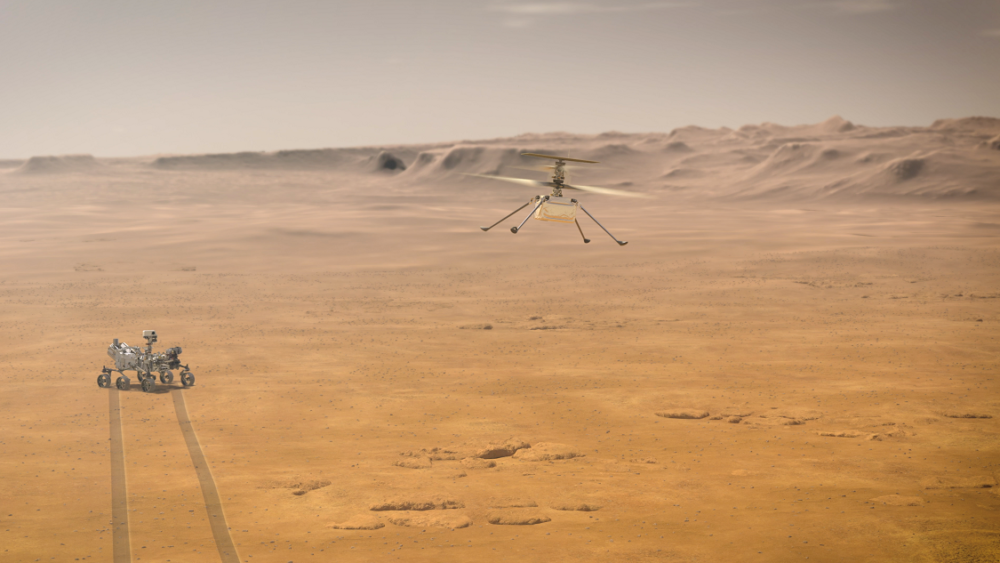
Perseverance will soon test its two-meter robotic arm and go for its first test drive on Mars.
Before the rover starts “roving,” the Mars 2020 mission needs to complete its first initiative. The Ingenuity helicopter will be the first attempt at autonomous powered aerodynamic flight on another planet, according to Scientific American.
Before any flying happens, Perseverance needs to find a flat location suitable as a helipad for Ingenuity within a kilometer of the rover’s landing site. After Perseverance gives Ingenuity a final charge, the helicopter will have a 30-day window to conduct up to five flights. The first “flight” will simply hover above the ground for 30 seconds. After that, each flight will get incrementally longer and fly farther in distance and higher in altitude.
Besides being a great feat of scientific engineering, Ingenuity could be a precursor to a new generation of reconnaissance drones that could survey terrain from above or explore hard-to-reach areas like cliffs or steep mountaintops according to NASA.
Chemistry teacher Michael Olsberg is excited by this prospect.
“The Martian terrain is extremely rough…Most rocks make their way all the way down to the surface, making the terrain extremely difficult to traverse,” Olsberg said. “I think the helicopter is a great addition to the rover.”
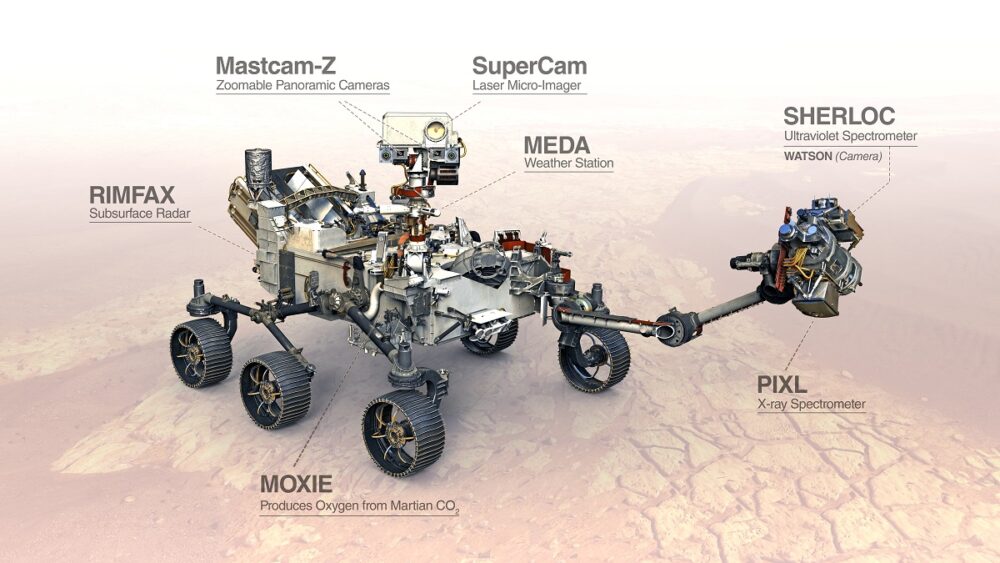
After 30 days or whenever Ingenuity completes its five flights, Perseverance can move on to its main objectives. The rover will embark on a 15-mile journey across Jezero Crater, driving at speeds of 0.1 mph over the course of two years. Along the way, it will record the Martian atmosphere, geology and terrain with seven new technologies attached to the rover.
One of these technologies is the Mars Oxygen In-Situ Resource Utilization Experiment (MOXIE) which will convert Martian atmospheric carbon dioxide into oxygen. This technology can be used for rocket fuel during subsequent Mars missions or even for breathing by future explorers.
The six other technologies on Perseverance are Mastcam-Z, Mars Environmental Dynamics Analyzer (MEDA), Planetary Instrument for X-ray Lithochemistry (PIXL), Radar Imager for Mars Subsurface Experiment (RIMFAX), Scanning Habitable Environments with Raman and Luminescence for Organics and Chemicals (SHERLOC) and SUPERCAM.
MEDA is a mini weather station that measures air temperature, humidity, wind speeds, radiation and dust levels on Mars. This will create accurate weather predictions of Mars for future human exploration and settlement.
PIXL is an X-ray fluorescence spectrometer and high-resolution imager that can detect textures and chemicals ancient microbial life may have left behind.
RIMFAX maps the geologic structure of Mars’ subsurface with ground-penetrating radar. If water or ice exists below the surface of Jezero Crater’s ancient river delta, RIMFAX will be able to detect it.
Mounted on Perseverance’s robotic arm are a collection of cameras, spectrometers and a laser called SHERLOC that can detect organic compounds above the ground. Its ultraviolet laser functions in much the same way as modern forensic instruments. SHERLOC is also testing small spacesuit pieces for durability over time in the harsh Martian environment.
Finally, SuperCam is an instrument made up of spectrometers, a camera and a laser. It can identify chemical rock and soil composition down to the atomic and molecular levels. It will observe rocks or soil that contain microfossils and other past signs of life as well as those that were changed or formed by water long ago. It can also identify elements in the Martian atmosphere that are harmful to humans. SuperCam can do all of this from 20 feet away, letting Perseverance study spots it can’t position SHERLOC over with its robotic arm.
The videos, images and records from Mars have been eye-opening. All the discoveries Perseverance can make with these instruments will open up a world of possibilities for future space exploration.
“Your generation will be the ones that carry on our desire to search new horizons and explore the unknown,” Olsberg said.
Ultimately, Perseverance is just one small step in unearthing the secrets of the universe and answering one long-held question: “Are we really alone?”
“If by any chance that we could find evidence that there was life on Mars, even if it is microbial, then it would change the way we see life on this planet,” Olsberg said. “We would know that life is not unique to this tiny little rock.”
As of 2021, Perseverance has just started its journey. More information is to come in the following years.





